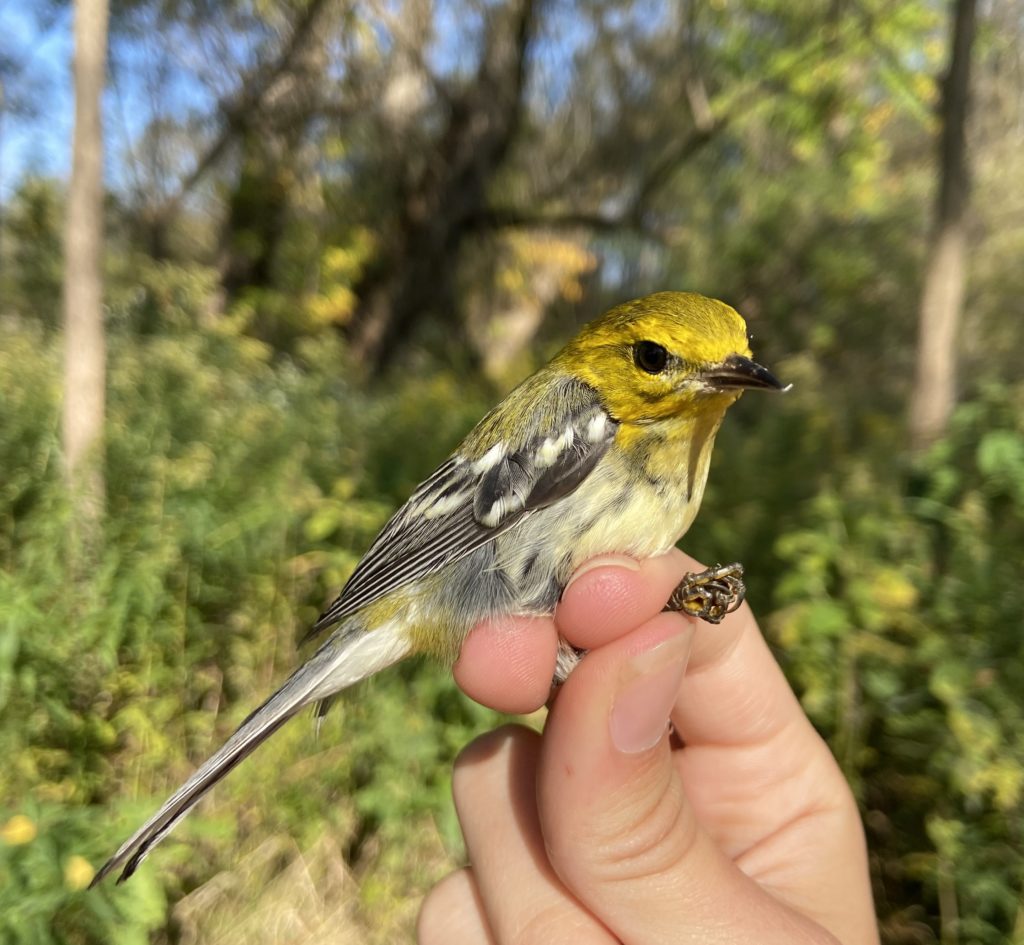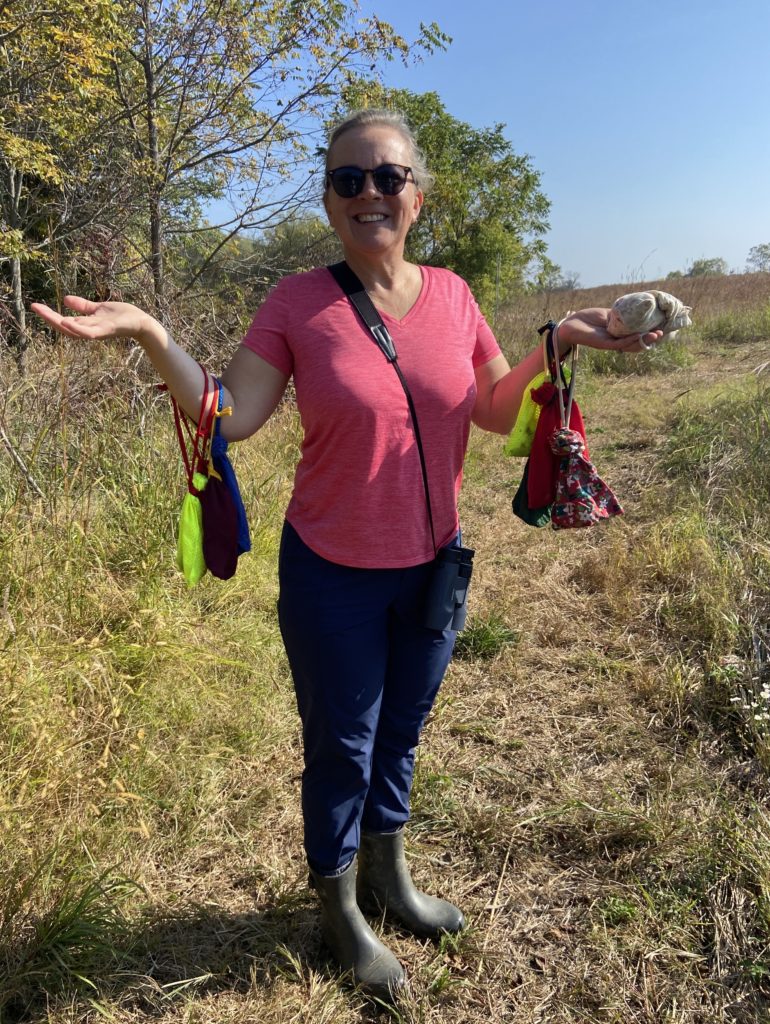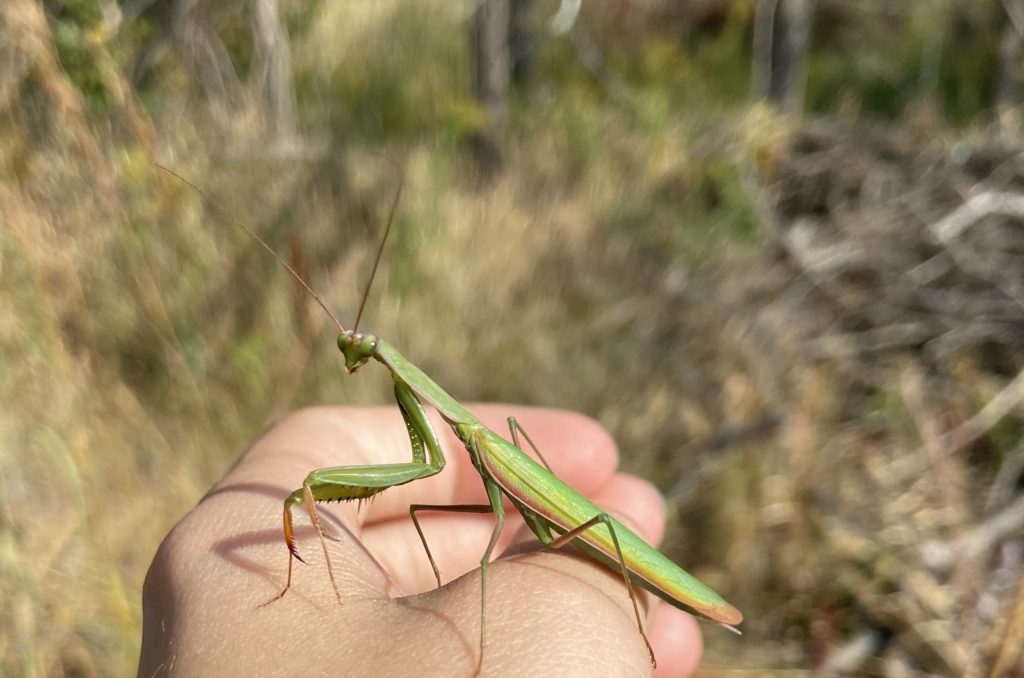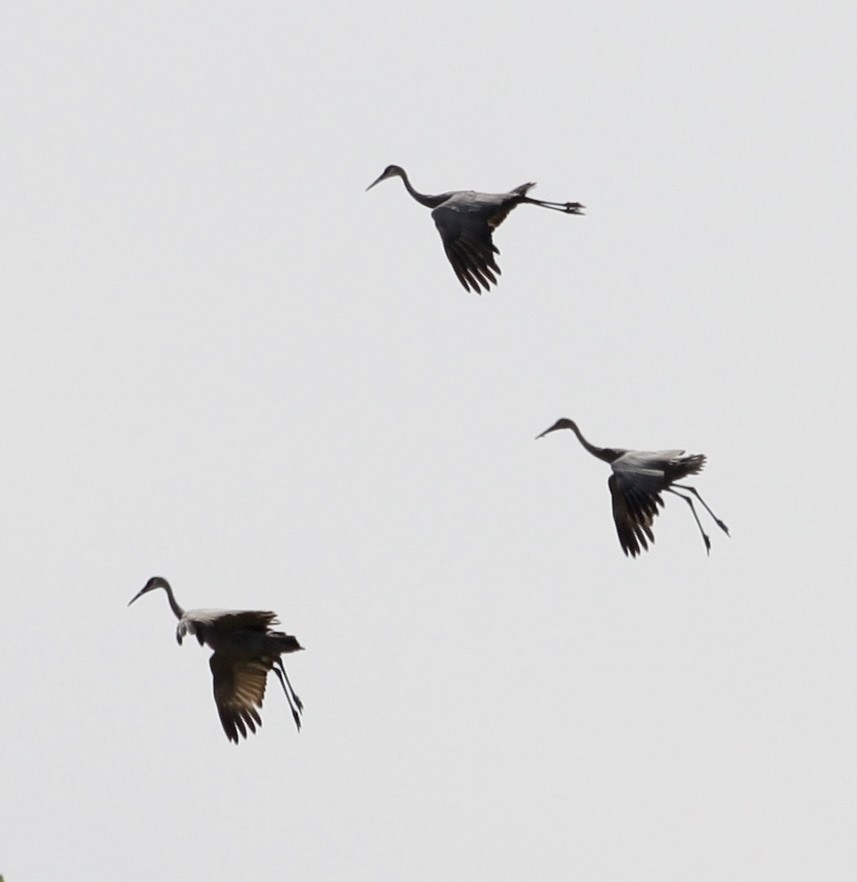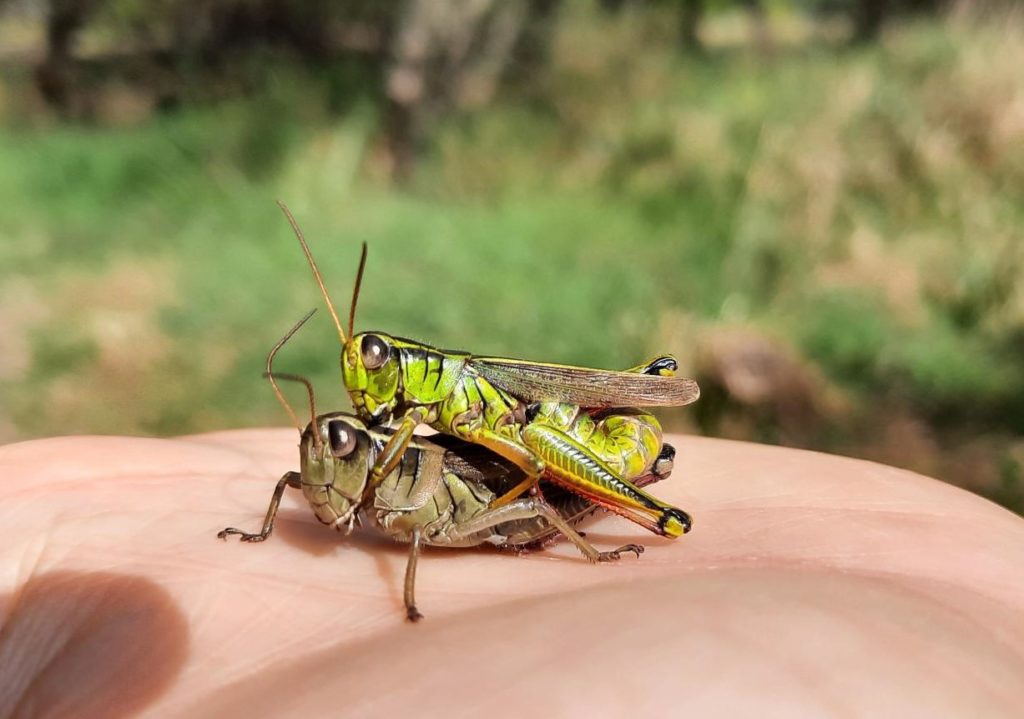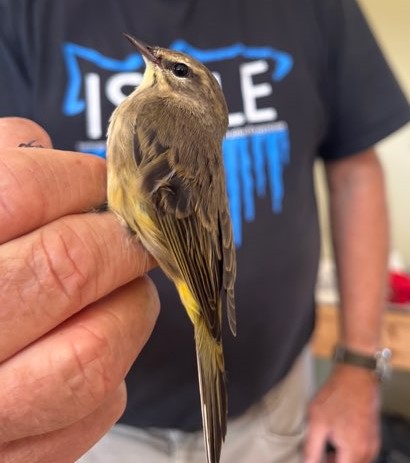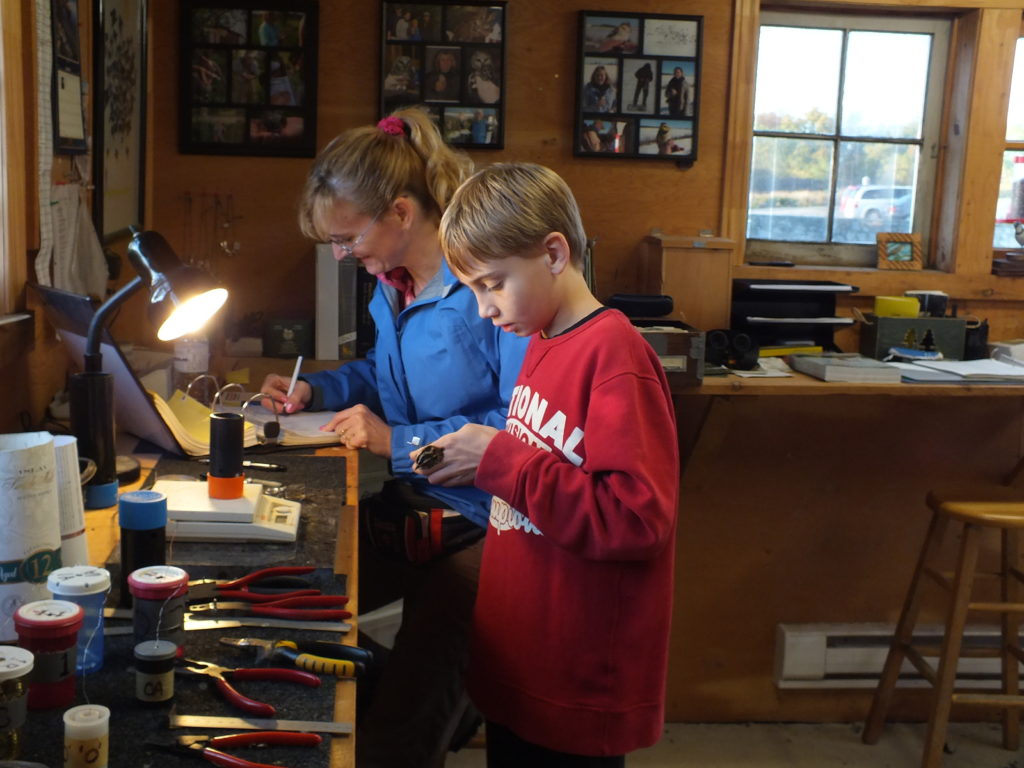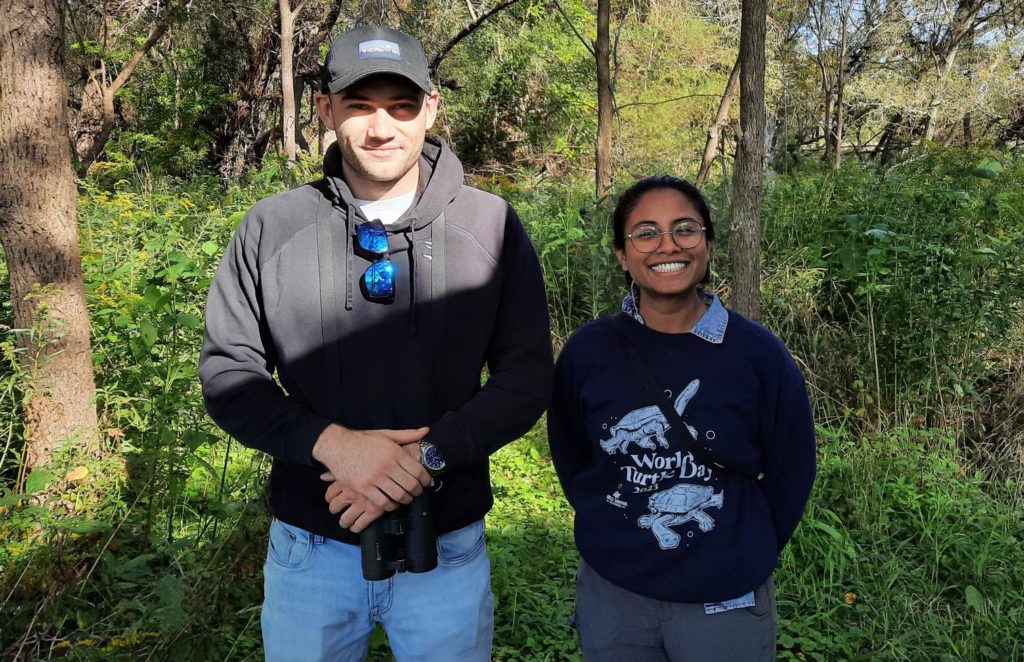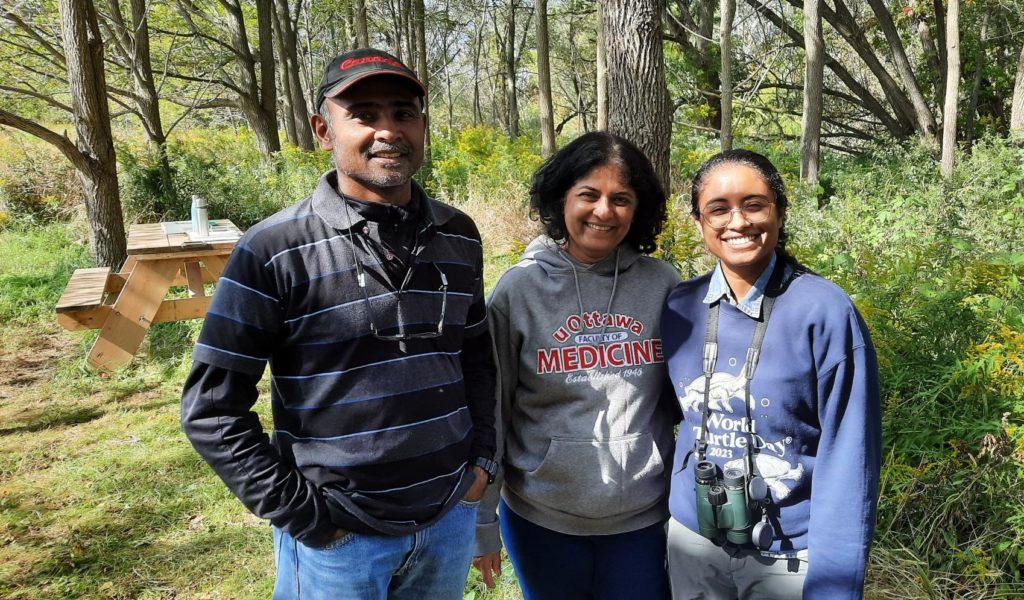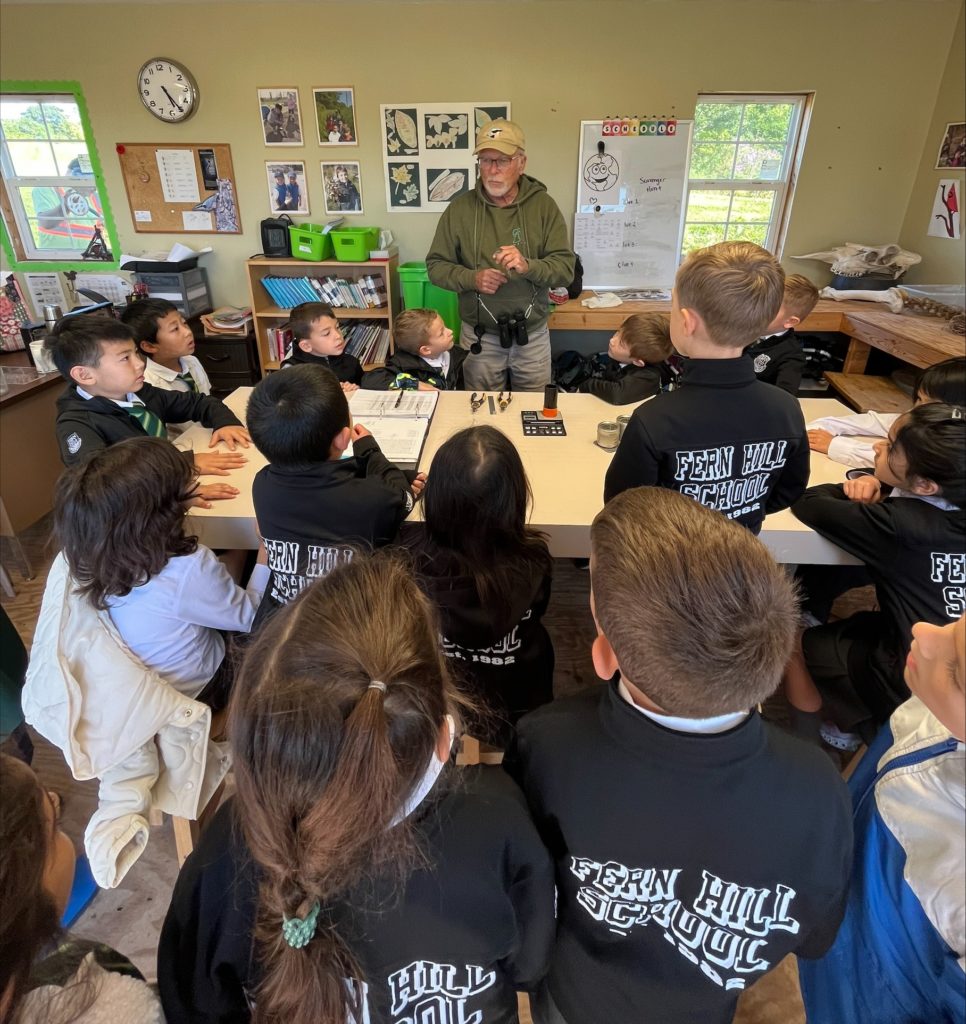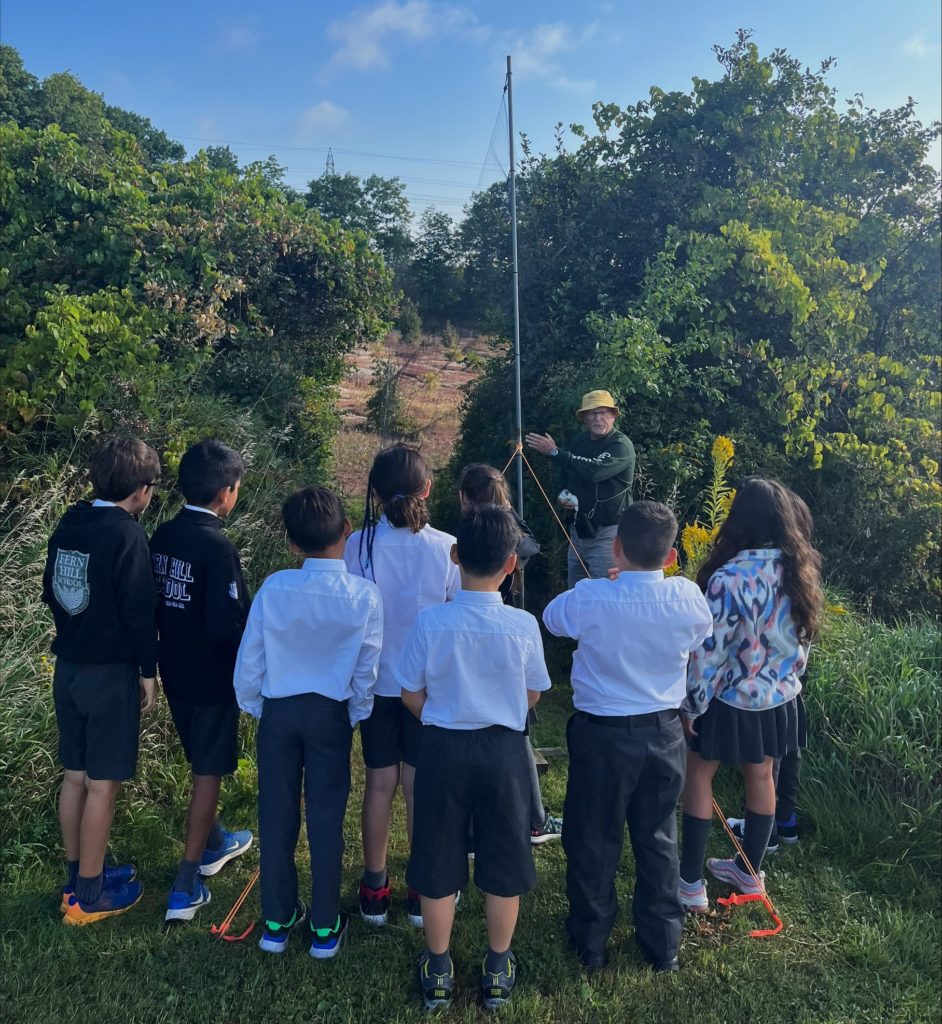We’ve had a busy 3 days at the Farm banding a total of 133 birds almost three quarters of which (73.7%) have been sparrows: 22 White-throated Sparrows, 33 Song Sparrows, 21 Lincoln’s Sparrows, and 22 Swamp Sparrows. The prairie grass field is proving to be a bonanza for them. We’ve changed and/or modified some net placements in response to the way birds are utilizing the habitat. When the field was just a soybean “desert” the birds moved along the edge of scrub/forest/wetland bordering the field. Now they actively move between the field and the edge. Most of this movement is by seed-eating sparrows. Warblers continue to move lengthwise but this season have stayed pretty high in the treetops.
We finished September with a respectable 423 birds banded and started off October with another 47. So things are going well. Of course, the weather helps, as we seem to be living through a never-ending Summer; temperatures today were in the mid-20’s and with almost no wind it felt much hotter than that. But birds are still on the move as we’re making the transition to kinglet, White-throated Sparrow time and Sarah even picked up a junco this morning. And the warbler variety is dropping as Myrtles make their presence felt. So I guess the message is: don’t let the temperature fool you; Fall conditions are nigh.
September 29th; Banded 49:
2 Eastern Phoebes
1 Downy Woodpecker
1 Black-capped Chickadee
1 Ruby-crowned Kinglet
1 House Wren
1 Winter Wren
1 Gray Catbird
1 Swainson’s Thrush
18 Song Sparrows
12 Lincoln’s Sparrows
4 Swamp Sparrows
1 Ovenbird
2 Common Yellowthroats
1 Magnolia Warbler
2 Indigo Buntings
ET’s: 28 spp.
September 30th; Banded 37:
1 Blue Jay
3 Ruby-crowned Kinglets
1 House Wren
1 Hermit Thrush
4 White-throated Sparrows
4 Song Sparrows
6 Lincoln’s Sparrows
12 Swamp Sparrows
2 Red-winged Blackbirds
3 Common Yellowthroats
ET’s: 36 spp.
October 1st; Banded 47:
1 Black-capped Chickadee
2 Ruby-crowned Kinglets
1 Golden-crowned Kinglet
1 Winter Wren
3 Gray Catbirds
14 White-throated Sparrows
11 Song Sparrows
3 Lincoln’s Sparrows
6 Swamp Sparrows
2 Red-winged Blackbirds
1 Myrtle Warbler
1 Black-throated Green Warbler
1 Northern Cardinal
ET’s: 43 spp.
Rick


